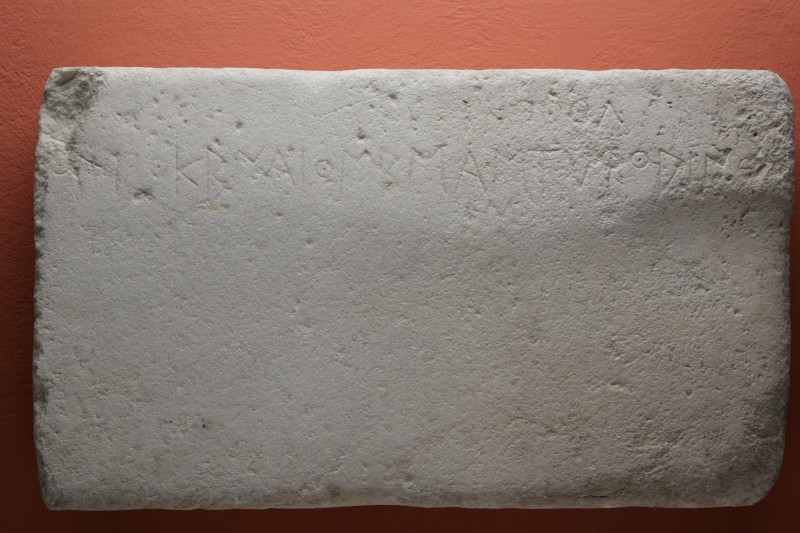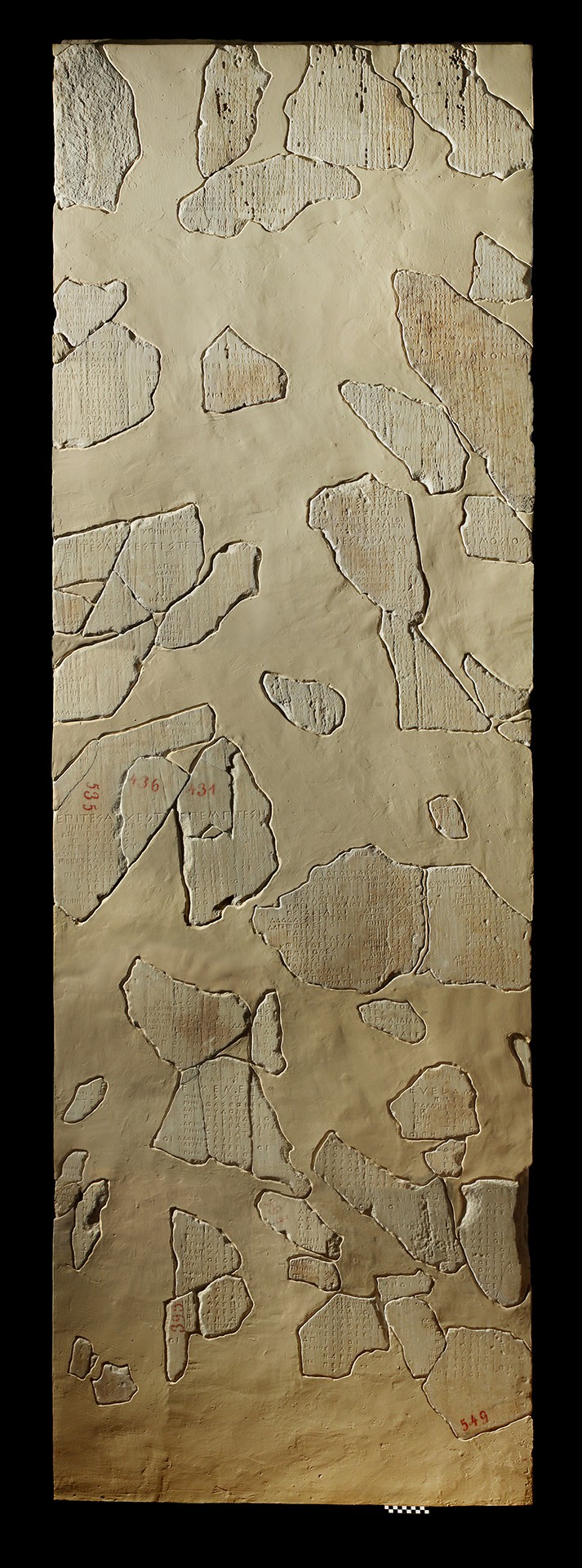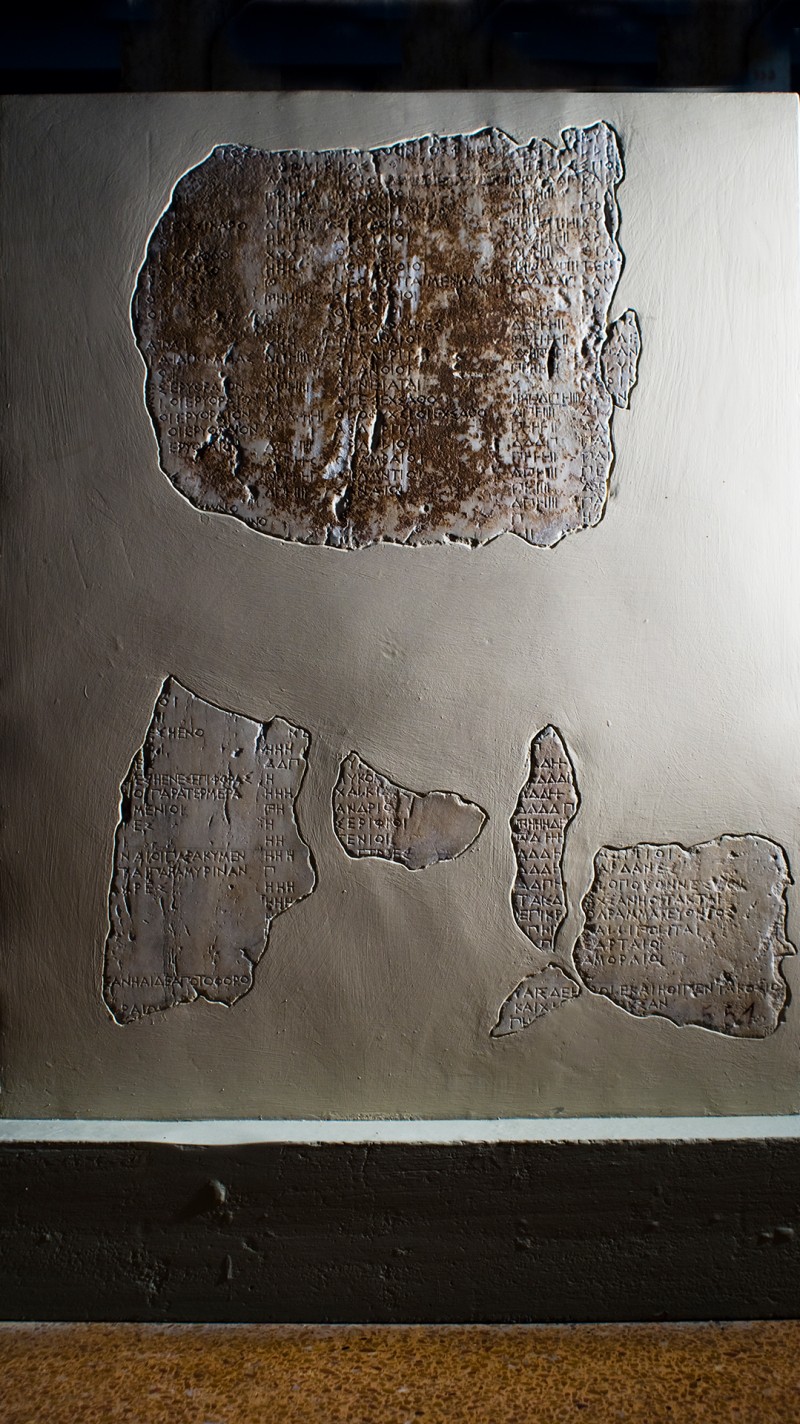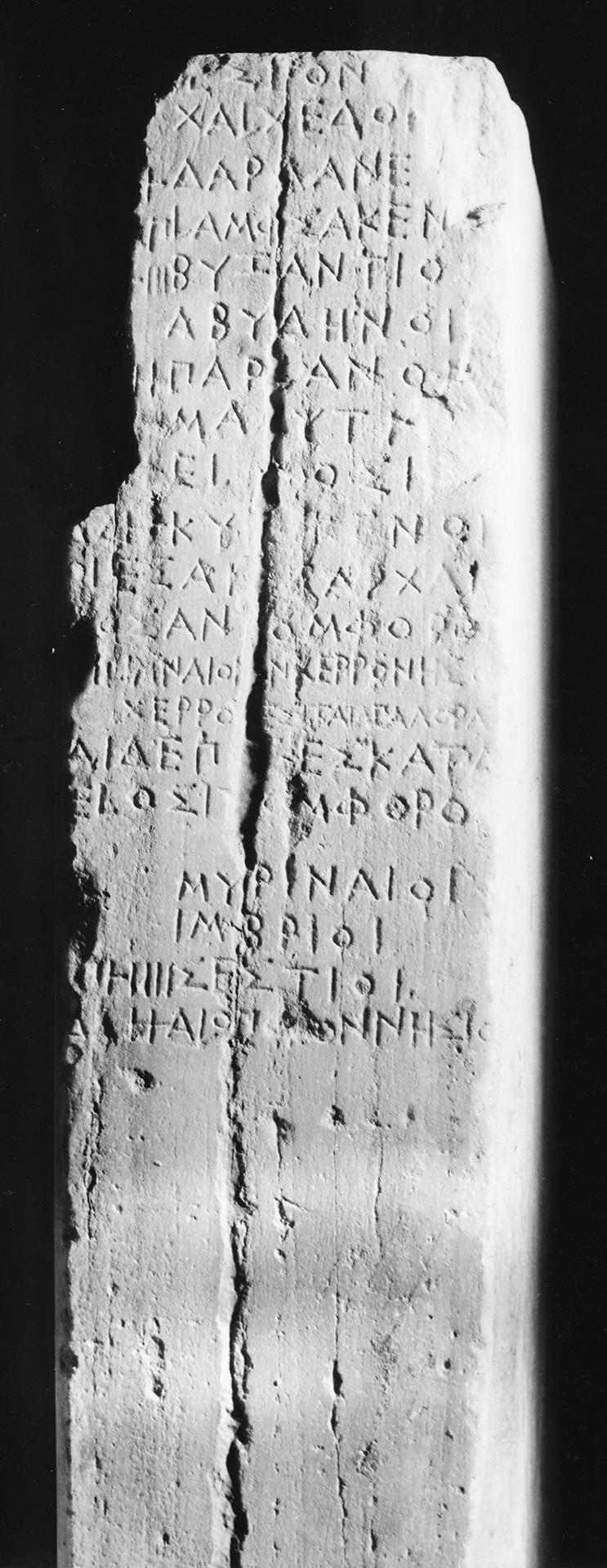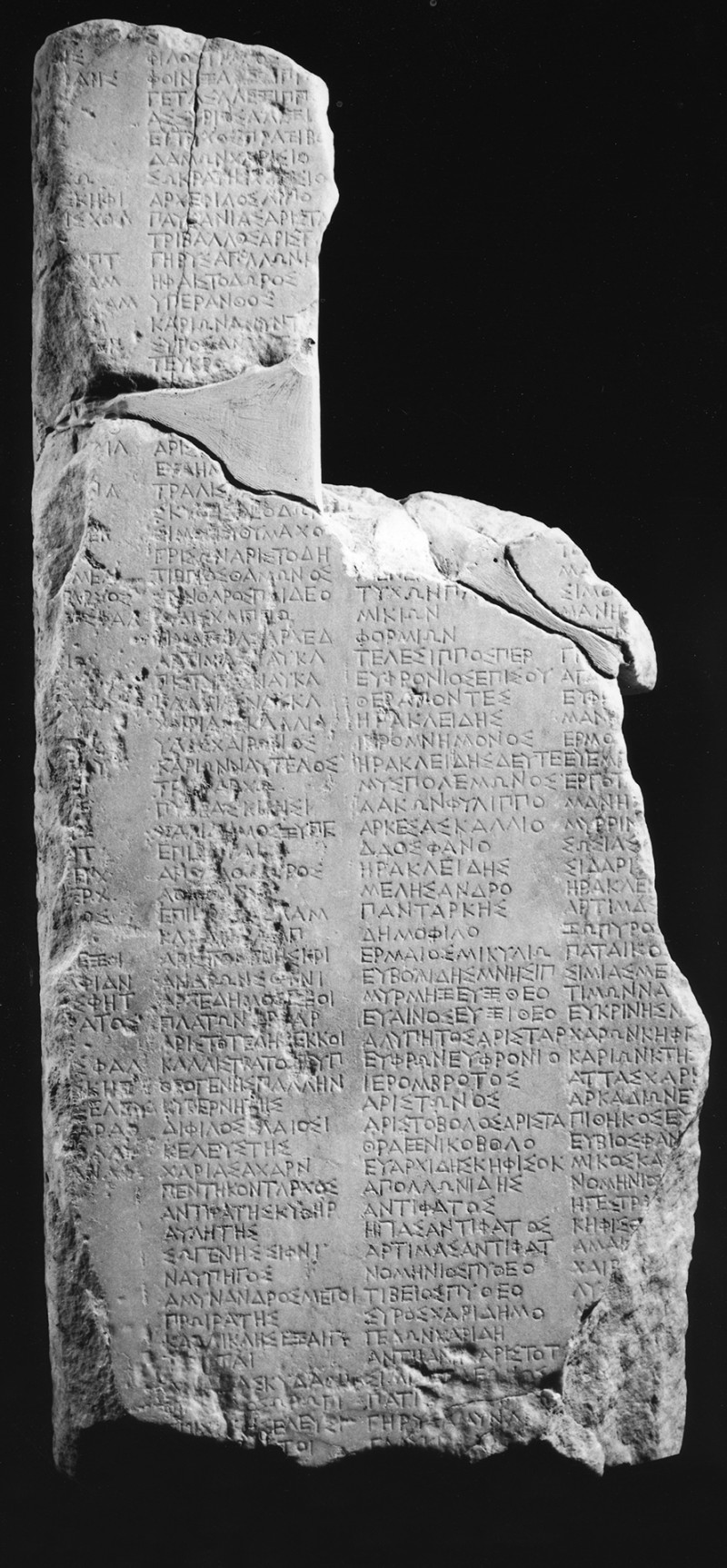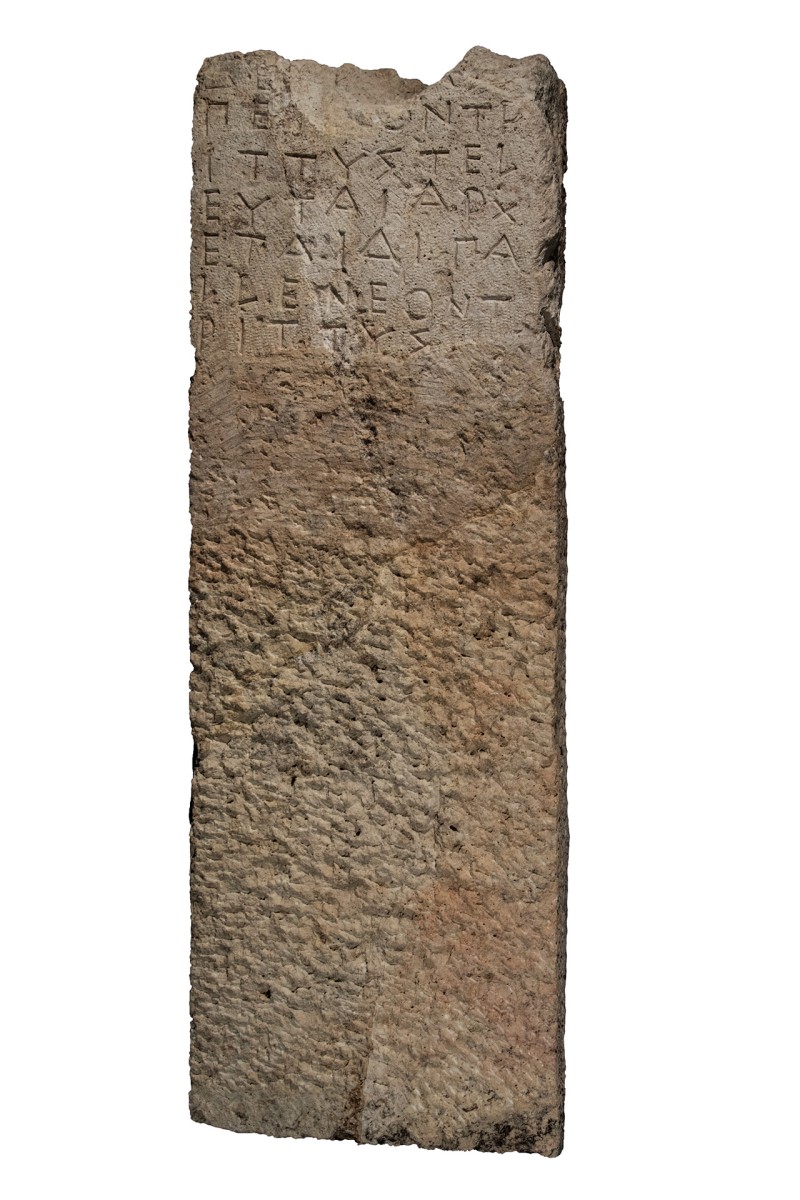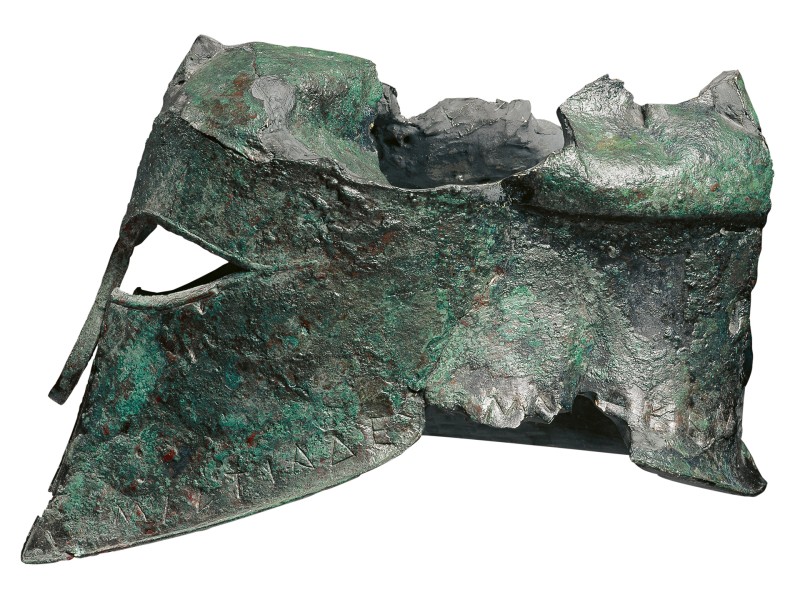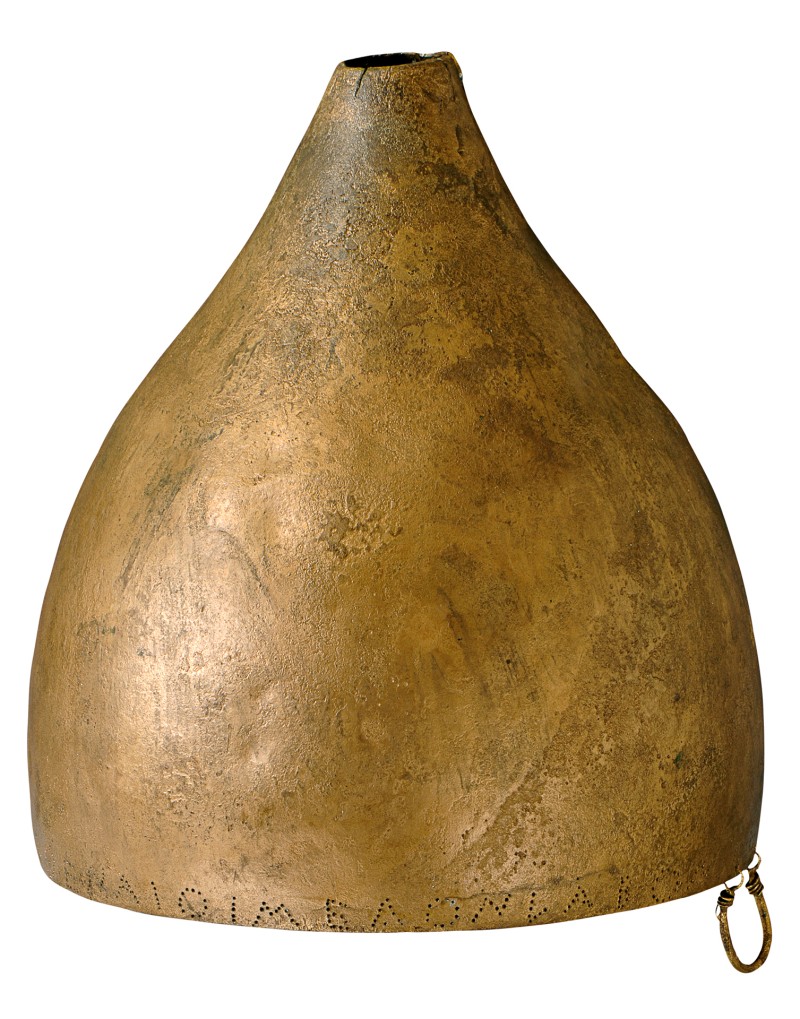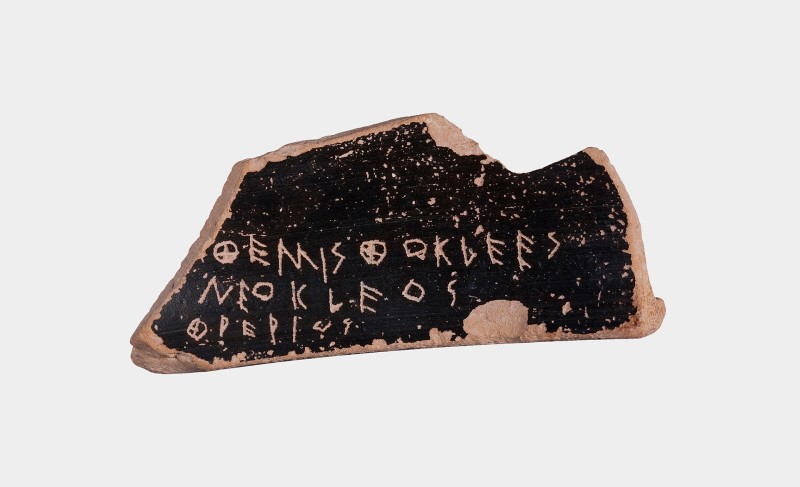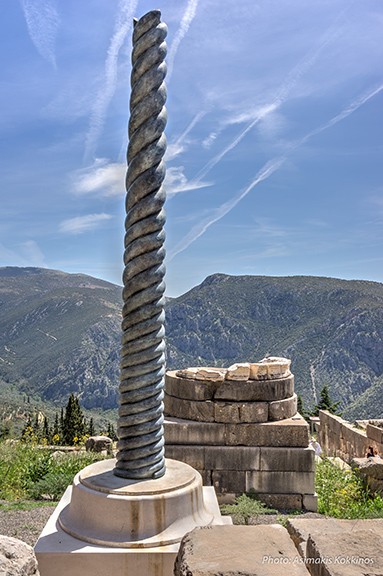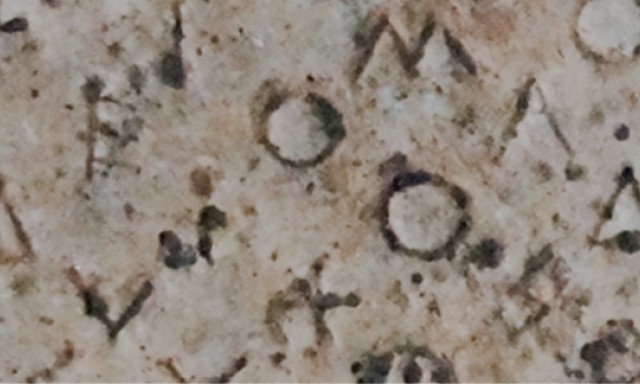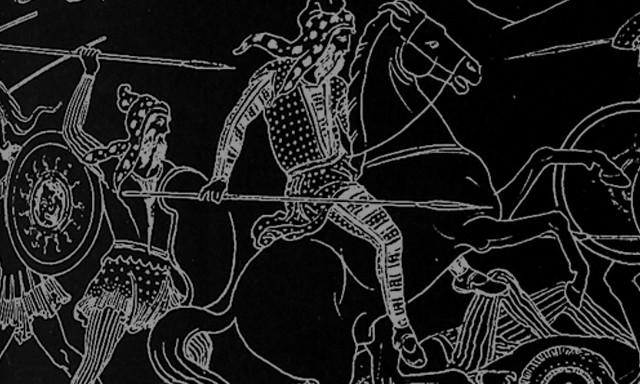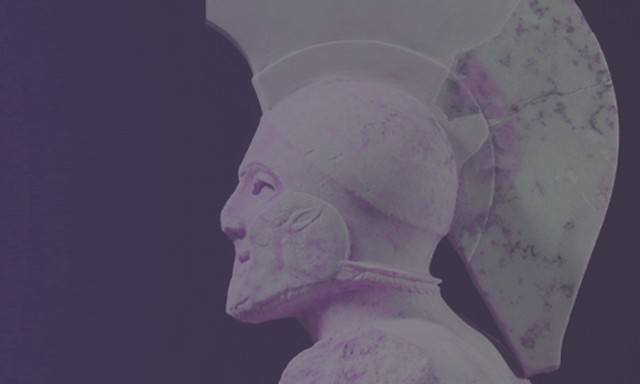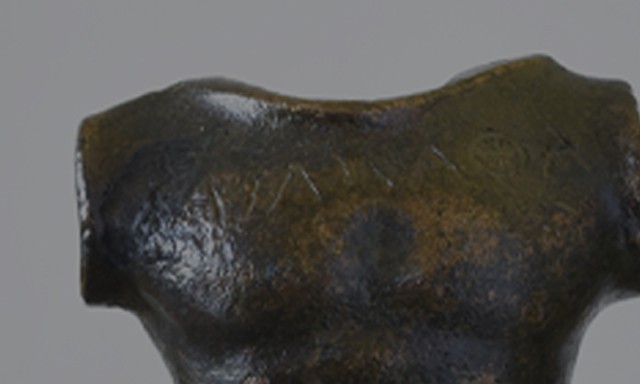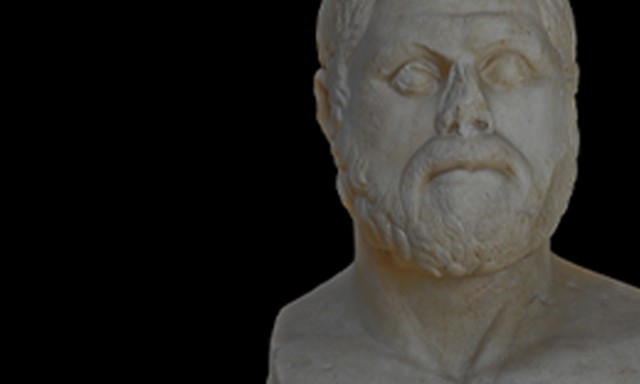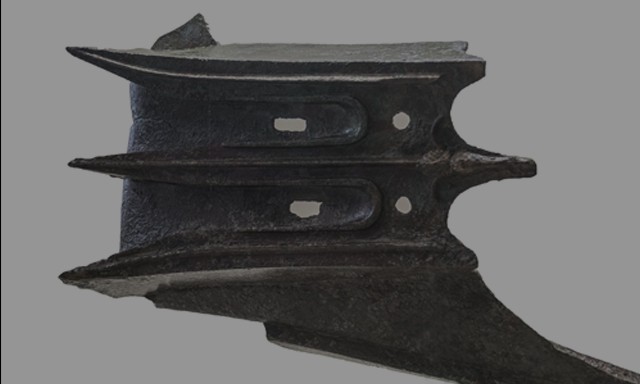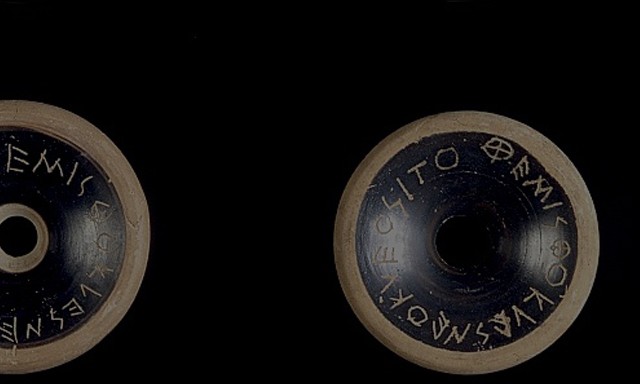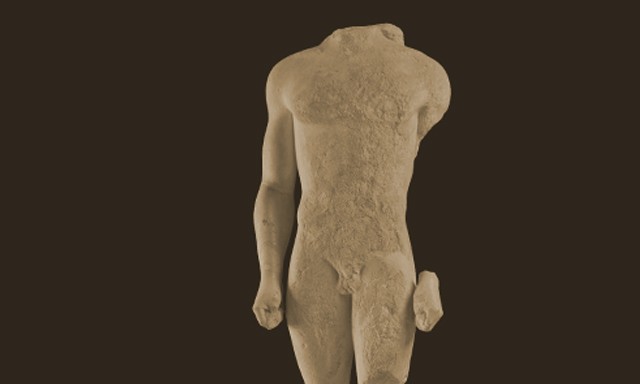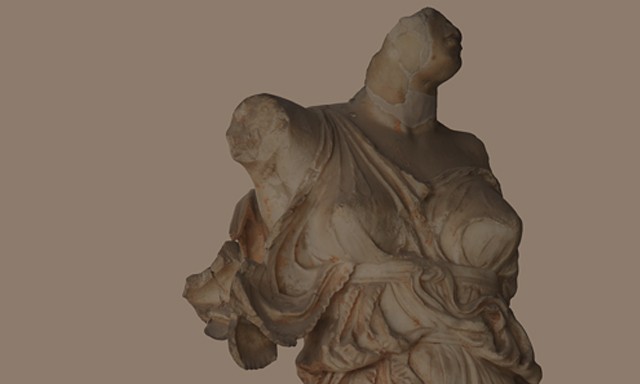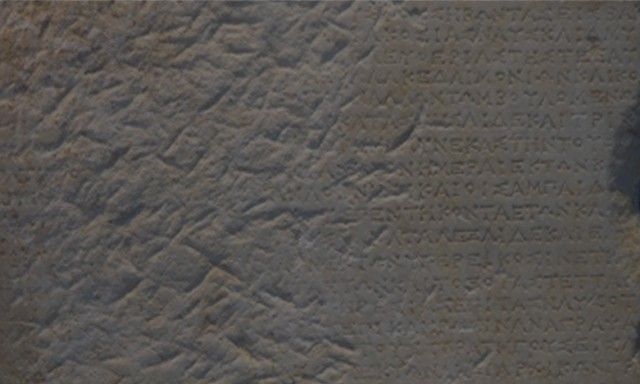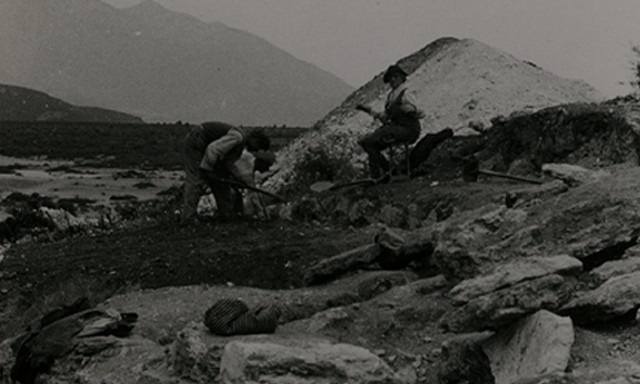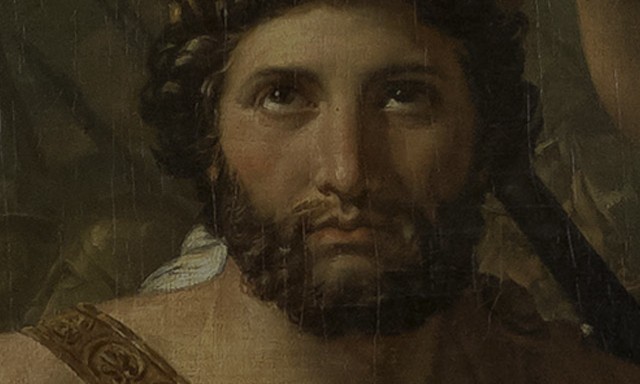CHAPTER CREDITS
Archaeological inscriptions constitute a valuable historical source, as they support the information written by ancient authors.
Among these epigraphic sources count important inscriptions of the Hellenistic period, such as the copy of the so-called “Themistocles’ decree”, found in 1952 in Troizen. The inscription informs us on the way in which the Athenian general managed to persuade his fellow citizens to take a brave as well as risky political decision to evacuate their city, seeing their salvation coming only from the fleet.
In the cemetery of Classical Salamis, present-day Ambelakia, was found a marble slab preserving part of an epigram, which refers to the Corinthians who fell heroically during the naval battle.
In Delphi, the serpent-shaped bronze votive column dedicated by the Greeks as a trophy bears the inscribed names of the 31 city-states who participated at the victorious battle of Plataea.
Engravings and epigraphic testimonies appear also on plain shards, which were used also as votes for ostracism. Numerous of them, from the Ancient Agora and the Kerameikos, bear the names of important politicians as candidates for ostracism, such as Aristides, Themistocles, Cimon, Kallias etc.
Apart from public inscriptions, the excavations have brought to light also important private dedications. In Olympia, on a bronze helmet attributed to General Miltiades, one finds inscribed his gratitude to Zeus for his brilliant victory at Marathon.
CREDITS
DISCOVER THE EXHIBITS
Choose one of the objects of the exhibition
EXPLORE THE EXHIBITION
Choose a chapter of the Exhibition
